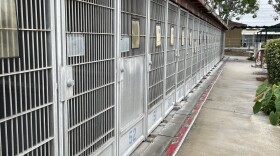The Boston Strangler's final victim has been identified, according to police who say DNA tests have linked Albert DeSalvo, who confessed to being the serial killer, to the death of Mary Sullivan in 1964. The authorities will exhume DeSalvo's body to get "a biological sample" that might provide a 100 percent match.
As of now, law enforcement officials say they have a "familial match" from DNA in forensic evidence, according to Boston's WBZ TV. They say the new certainty stems from advances in DNA testing in the past 10 years.
The new development in the nearly 50-year-old case was announced Thursday morning by Suffolk County District Attorney Dan Conley, who was joined by police investigators and at least one member of Mary Sullivan's family -- her nephew, Casey Sherman.
"I've lived with Mary's memory every day, my whole life," Sherman said. "And I didn't know, nor did my mother know, that other people were living with her memory, as well."
"It's taken 49 years for police to say they legitimately got their man," Sherman said, going on to thank the investigators for their hard work and for not giving up on the case.
He also called Mary "the joy of her Irish-Catholic family," a 19-year-old who had moved to Boston only four days before she was murdered. Sherman has written a book about his aunt's murder, A Rose for Mary. He says the case may now bring closure to his mother and the rest of their family.
The Boston Strangler killings, in which more than 10 women were murdered between June of 1962 and January of 1964, set the city of Boston on edge at the time of the crimes. And the lack of closure resulted in the case being reopened back in 1999.
DeSalvo confessed to the crimes, which included rape and murder, while in prison. But his confession was ruled to be inadmissible in court, as it was made to a fellow inmate. He was never formally charged with the crimes, and many -- including the DeSalvo and Sullivan families -- have maintained that he did not commit all of the crimes. DeSalvo was killed in prison in 1973.
Copyright 2013 NPR. To see more, visit www.npr.org.






